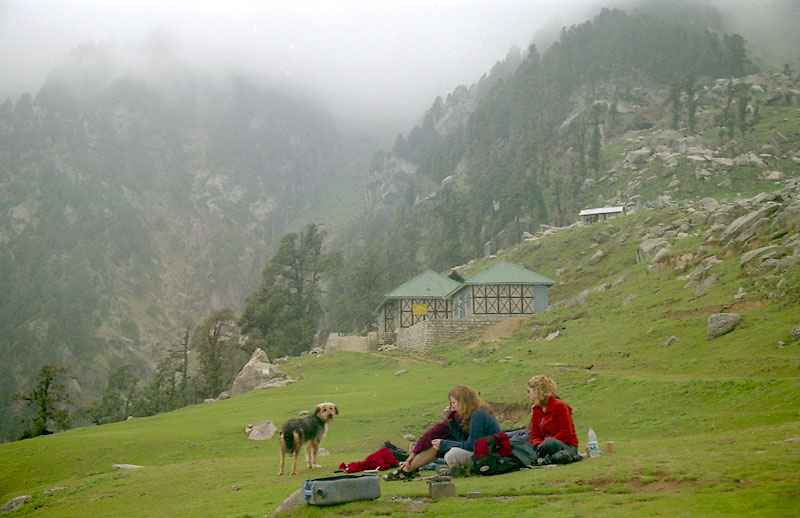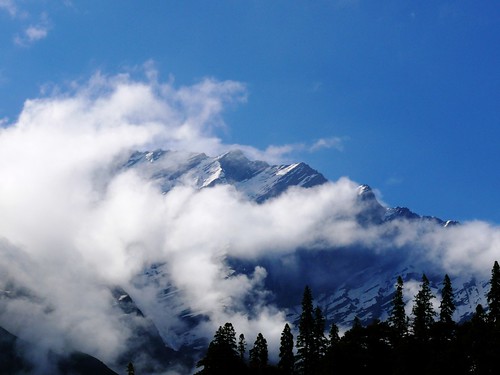The city of Dalhousie was established in the year 1854 in the state of Himachal Pradesh during the British rule in India. It is a beautiful hill station and is the gateway to the Chamba Hill State. The city is situated along the western side of the Dhauladhar Range of the Himalayas and is built on and around five hills Balun, Kathlog, Petreyn, Tehra and Bakrota. The city is situated around 6000 to 9000 feet above the sea level and its natural beauty, stimulating air, warm sunshine and quiet surroundings add to the beauty of the landscape.
How to reach here:
By Air: Nearest airports are Pathankot which is about 80 km from Dalhousie and Jammu at a distance of 180 km from Dalhousie.
By Rail: Nearest railhead is Pathankot (80 km) and is well connected by rail to various cities in India, including Delhi, Mumbai and Amritsar.
Best time to visit: April to November
Languages spoken: Pahari and Hindi.
Must eat: Mughlai and Indian cuisine
Famous Restaurants: Kwality, Alishan, Amritsari, Moti Mahal.
Places you must visit:
Kynance, a residential building is an important landmark, which is also recognised as a heritage site. This building is the private property of Dharamvirs, which was constructed by Dr. N.R. Dharamvir of Lahore. Constructed in 1933, the building is historically significantly, owing to its association with the great freedom fighter, Netaji Subhash Chandra Bose.The great leader stayed at this house for seven long months with the Dharamvirs. When health of Netaji deteriorated, he decided to travel to Dalhousie so as to relax at this place. The building stands secretly in such a manner that most of the tourists even fail to notice its presence. In order to locate this building, tourists can only see a small board that bears the name of Kynance. This sign board dangles from a tree, which is noticeable only to those travellers who have an eye for catching every detail.

St. Andrew's Church was constructed in 1903.This church was built as a result of efforts of the Protestants. St. Andrew's Church is located at Balloon and follows Protestantism. Although the church is over hundred years old but is still in good condition. The church authority, which manages this place, has erected a boundary wall around this church so as to protect the complex from any act of destruction.

St. Francis Church is one of the prominent monuments of Dalhousie. The money required for the construction of this church was attributed by army officers as well as civilian. Constructed in 1894, this church is being maintained and managed by the Catholic Diocese of Jalandhar.he major attractions of this church include beautiful glass work along with intricate stone work.Built in accordance to a famous Church of England, the St Francis Church has the architectural style that bears the old British type of architecture.
St. Patrick's Church is the largest church of the hill station. Dating back to 1909, St. Patrick's Church has a main hall, which has a seating capacity of around 300 persons. The officers and ranks of the British Army contributed largely to the inception of this church.

Bhuri Singh Museum, officially established in 1908, is named after the illustrious King Raja Bhuri. He was the one who contributed the compilation of paintings of his family to the museum. In addition, the museum also exhibits the inscriptions, which are in Sarda scripts. These scripts provide vital information on the medieval account of Chamba.The history of the region states that the Chamba rulers were great patrons of arts and culture. This can be best seen through the collection available on display in this museum. Outstanding collections of Guler-Kangra style paintings are also showcased in this museum. In addition, the Basohli style paintings, which illustrate the Bhagwat Purana and Ramayana, are the major attractions for tourists visiting this museum.Other attraction of the museum is the Chamba-Rumals, which are famed for their stunning embroidery work. Besides, museum also has on display, items like Armour and arms, coins, hill jewellery and costumes, diverse ornamental artefacts and musical instruments.

Rang Mahal, founded by Raja Umed Singh is located in Surara Mohalla. This palace was once the abode of a division of the ruling reign. Tourists can see a perfect blend of British and Mughal style architecture in this palace. Dating back to 18th century, the walls of this palace are gnarled with fine exemplars of Punjab hill style wall paintings. These painting portray the life of Lord Krishna, which are the major attractions of this palace. The museum also had a large number of ornamental and vibrant wall paintings. However, these paintings have been detached from the walls of the palace and have been taken to Delhi National Museum. The palace also houses the Himachal Emporium from where tourists can purchase items like handmade rumals, shawls made in wooden looms and chapels.
Chamunda Devi Temple, situated on the banks of the beautiful Baner River, is one of the famous temples of the region, which is believed to 750 years old. Dedicated to Goddess Kali, who is the ferocious incarnation of Durga Devi, this temple is located in beautiful ambience. Tourists visiting the temple can also enjoy the beautiful sights of the mountains along with the woody forests of Lahl and Pathiar.According to a legend, it is said that at the site where the temple is constructed, the Goddess Ambika killed the two demons, Munda and Chanda. The main idol kept in this temple is wrapped in a red cloth. This is done so that the devotees are not allowed to touch the deity.the temple also holds a boulder, which depicts presence of the Lord Shiva in stone lingam form. The temple premises are enshrined with several images of other gods and goddess.
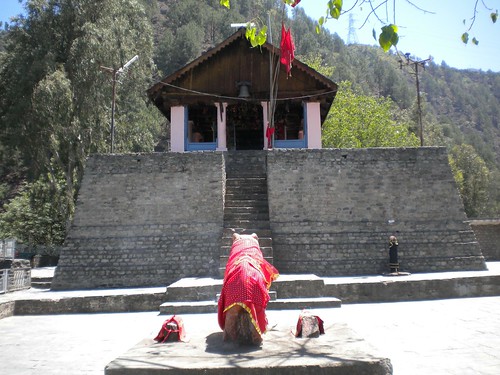
Hariraya Temple, located adjacent to the Central Park is dedicated to the Lord Vishnu. Constructed in stone, this temple represents the Shikhara style architecture. The deity image present in this temple is made of bronze. The image has three faces, which are made out from eight different materials and thus represents a fine implementation.Dating back to 11th century, this temple is home to several other deities such as Lord Shiva, Surya and Aruna. The main deity in this temple is ornamented with finger-rings, bracelets, armlets, mukut, necklaces, a beaded garland, and kundals. the temple has some finely carved Shikharas along with the sculpture of Vishnu straddling six horses. The saffron colour of this shrine helps this structure to stand out. Tourists visiting the temple can view an enshrined bronze image of Lord Vishnu, which is in the form of Chaturmurti.

Norwood Paramdham, located on Bakrota Hill of Dalhousie town, is a beautiful house with enormous religious and social importance. Locally known as the Kainth Wali Kothi.In 1925, Swami Satyanand, who is the famous social and religious guru, during his visit to Dalhousie, resided in this house. During his journey to this beautiful hill station, he started his mediation and before attaining enlightenment, he fasted for a month. He was the one who named the place as Tapo Bhoomi. While staying in this hill station, Swami Satyanand also wrote several religious books.In 1960, Swami Satyanand took his last breath and since then the place is also known as Param Dham. In addition, the place is also known as the Ram Ashram.

Dakshina Murti was founded by Dr. R.P. Kaushik, who is an eminent spiritual teacher. Established in 1970's, the philosopher from Sonepat started a yoga institution, which he named as Dakshina Murti. The goal of this institution was to spread the practice of Yoga and also to teach spiritualism through it.

Shivkul, an ashram is one of the famous religious and tourism destinations of Dalhousie. It is an ashram of Vimala Thakur who is an eminent religious philosopher and social reformer.Nestled in the lap of the beautiful Pir-Pinjal Hills, it is a beautiful ashram. This hill connects the Chamba district with the neighbouring state of Jammu and Kashmir.

Kalatop Wildlife Sanctuary, located in the district of Chamba, is one of the most popular as well as most frequented sanctuaries in state of Himachal Pradesh. Popularly known as the Kalatop Khajjiar Sanctuary, the entire forest is covered with the thick foliage of deodar trees. In addition the sanctuary is also home to several animals and birds.The vegetation is in this sanctuary mainly comprises blue pine, fir and deodar trees. Home to several species of animals and birds that reside within the forests make it one of the most popular tourist attractions of the entire State. Leopard, Bear, Deer, Squirrel, Barking Goral, Serow, Langur, Jackal and Himalayan Black Marten are some of the animals that are inhabited in the Kalatop Wildlife Sanctuary. The streams of water passing through this sanctuary flow into the River Ravi, which is located to the north of this sanctuary.

Panchpula is located at a distance of around 3 km from Dalhousie. One of the famous picturesque spots in the region, the word Panchpula means five bridges. It is the place where a descending stream pours into and feeds several pools. The main stream that supplies water to cities of Dalhousie and Balloon is the Panchpula stream. The stream originates from the northern side of Dayakund, which then cuts through a ravine to fall into the water bodies located in Panchpula.A monument or a samadhi has been built where several streams meet at Panchpula in the memory of Sardar Ajit Singh, who was a great revolutionary.

Subhash Baoli has been named after Subhash Chandra Bose, the famous freedom fighter. In 1937, he had spent a lot of time in Dalhousie at this place. Subhash Baoli is a beautiful spot circumscribed by several and huge towering trees. It is one of the most popular tourist spots of Dalhousie owing to the natural spectacle of the place and for the beautiful views of the snow capped peaks.Subhash Chandra Bose sat and meditated while he was staying at Dalhousie. The same historical location has seating arrangements now, where tourists can sit and enjoy the natural beauty of the overlooking mountains.

Kalatop is one of the places near Dalhousie that has snow all year round. The only way to see Kalatop is on foot as most cars cannot go beyond a point because of the snow and if you plan to do the three day trek all the way to Khajjiar, then make sure you are trained for it. If not, Kalatop still has lots to offer by way of a starkly beautiful landscape draped in white. Miss Kalatop and you miss an unforgettable experience!

Khajjiar is truly breathtaking with a kind of severe beauty that is still riveting. You?ll find a large snow-covered plain here and the locals offer you many activities like horse-riding, games and photography. In fact during season, the atmosphere is like a bustling village fair. The snow here falls thick enough for snow fights, building snowmen or simply to experience snow if you never have before. Charming little bridges over frozen streams make this area seem like a little dream land you can touch and feel. Another cute thing to do here is dress up in the local attire and get your picture taken.

St. John's Church, oldest church of the town carries immense historical significance. Constructed during the rule of Britishers in India, this church was founded by the protestant missionaries. Located amidst beautiful natural backdrop, this church is one of the most visited churches of the town.

Laxmi Narayan Temple is a 10th century temple, which is constructed in the Shikhara style by Sahil Verman. It is the oldest and the largest of all the temples located in Chamba region. The temple complex houses six shrines, which are either dedicated to Lord Vishnu or to Lord Shiva.Inside the temple, there is a main idol of Lord Vishnu, which is made using a rare piece of marble that has a glittering appearance. In addition, there are number of shrines in this temple, which are dedicated to several other deities like Gauri Shankar, Radha and Krishna.


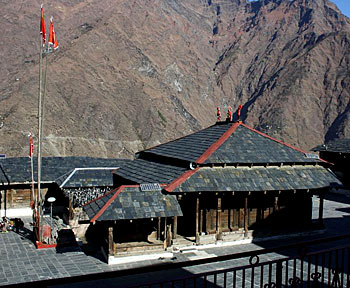



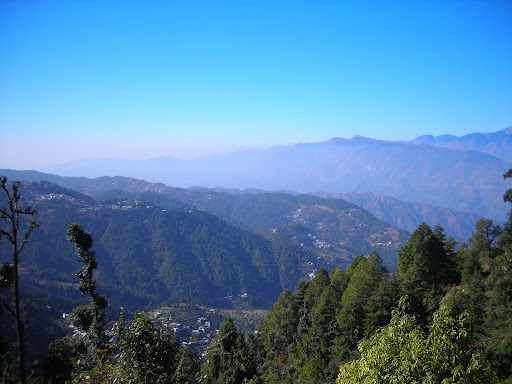
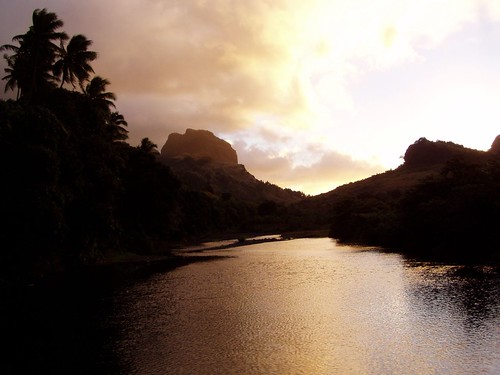



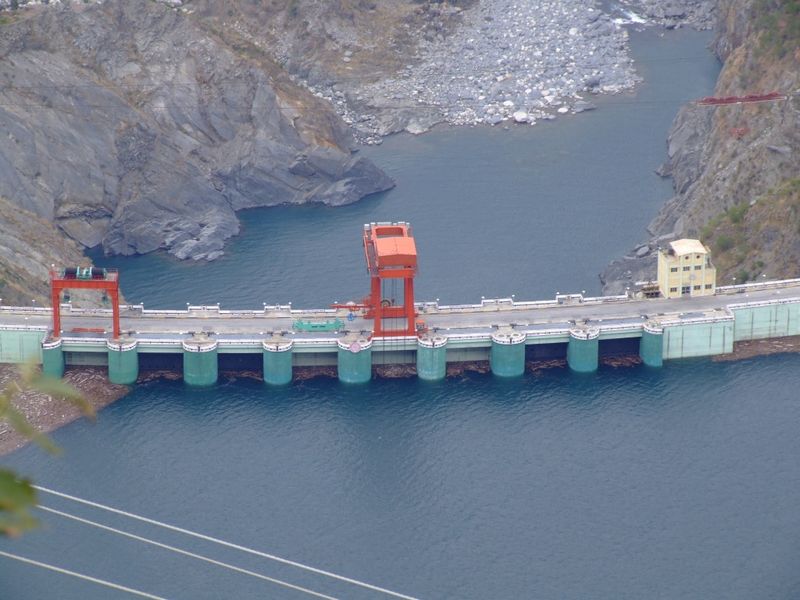

Kalatop is one of the places near Dalhousie that has snow all year round. The only way to see Kalatop is on foot as most cars cannot go beyond a point because of the snow and if you plan to do the three day trek all the way to Khajjiar, then make sure you are trained for it. If not, Kalatop still has lots to offer by way of a starkly beautiful landscape draped in white. Miss Kalatop and you miss an unforgettable experience!

Khajjiar is truly breathtaking with a kind of severe beauty that is still riveting. You?ll find a large snow-covered plain here and the locals offer you many activities like horse-riding, games and photography. In fact during season, the atmosphere is like a bustling village fair. The snow here falls thick enough for snow fights, building snowmen or simply to experience snow if you never have before. Charming little bridges over frozen streams make this area seem like a little dream land you can touch and feel. Another cute thing to do here is dress up in the local attire and get your picture taken.

St. John's Church, oldest church of the town carries immense historical significance. Constructed during the rule of Britishers in India, this church was founded by the protestant missionaries. Located amidst beautiful natural backdrop, this church is one of the most visited churches of the town.

Laxmi Narayan Temple is a 10th century temple, which is constructed in the Shikhara style by Sahil Verman. It is the oldest and the largest of all the temples located in Chamba region. The temple complex houses six shrines, which are either dedicated to Lord Vishnu or to Lord Shiva.Inside the temple, there is a main idol of Lord Vishnu, which is made using a rare piece of marble that has a glittering appearance. In addition, there are number of shrines in this temple, which are dedicated to several other deities like Gauri Shankar, Radha and Krishna.

Bakrota hills is beautiful place to walk. It goes round the hill and offers you a spectacular view of the snow covered mountains.

Bara Pather also known as the temple of Bhulwani Matha is in the village of Ahla at the foothills of Dayan Kund peak.The temple itself is 150 years old and well worth visiting for its historical significance.

Dainkund Peak, perched at an altitude of 2755 metre, is the highest mount in Dalhousie. Tourists can enjoy 360° view of the entire valley from this peak. The sound of the breeze passing through the trees makes a musical sound, due to which this peak has also acquired the name, the singing hill.The top of this hill is occupied by the Indian Air Force and from there a left turn will take tourists to the Pholani Devi Temple. One of the most interesting facts about this temple is that, except a trident there is nothing inside the temple premises.


Satdhara Falls, located on the way to Panchpula is one of the most popular sightseeing attractions of Dalhousie. Perched at an altitude of 2036 m above sea level, the place has derived its name from the seven beautiful springs.It is believed that these springs have several therapeutic values. This is because water in these springs comprises mica, which is known as 'Gandhak' in local language. The mica has several medicinal properties, which helps in curing many diseases and ailments. In addition, tourists visiting the place can also go for a walk and enjoy the natural beauty of the place.

Jhandri Ghat, perched at an altitude of 2036 m, is one of the most famous tourist attractions. This ghat is located at a distance of 2 km from Dalhousie, while from Subhash Baoli, it is 1.5 km away. The palace of erstwhile royalty of Chamba is located at Jhandri Ghat. The place is also lined up with streamlets and tall pine trees that offer visitors some beautiful picnic spots here.
Central Park provides panoramic views of the entire hill station. A verdant field, which is the jamboree of all the activities in the town, the central park, is the largest crowd puller in the city in recent years. This fabulous spot, on the precipice over River Ravi is also known as Chaugan and the most remarkable construction in this place is the Gandhi gate that immortalizes Lord Curson’s visit to Chamba.The park was a prominent spot for cricket tournaments during the British reign and now it houses various fairs and carnivals apart from being a Polo ground. This meadow is the hub of local trade and its vast stretch of luscious greenery makes it a popular esplanade. A beautiful temple of lord Shiva, where the famous Manimahesh Yatra takes place is an added attraction here.

Akhand Chandi Palace was built by King Umed Singh around 1747-1765 AD and with the help of British Engineers, it was renovated by the King Sham Singh. This gorgeous mansion reflects a unique style of architecture. The descendants of the great regime handed over this beautiful building to the state government and like many other buildings of the yesteryears, this gorgeous citadel is swiftly parting with its former glory. An elegant structure that was famed for its glasswork and painted walls are in a ruined condition due to lack of proper maintenance. The ceilings with delicate carpentry reveal the artistic excellence of the craftsman.



Chamera Dam is the lifeline of Dalhousie as the city survives on its water. The dam is situate on Chamera Lake, around 35 km from Dalhousie. There are no aquatic beings in the lake, thus making it ideal for water sports. Some of the most popular adventure that can be enjoyed here are rowing, paddle boating, motor boating, sailing, canoeing, angling and kayaking. Himachal government also provides shikaras and house boat rides on the site.

